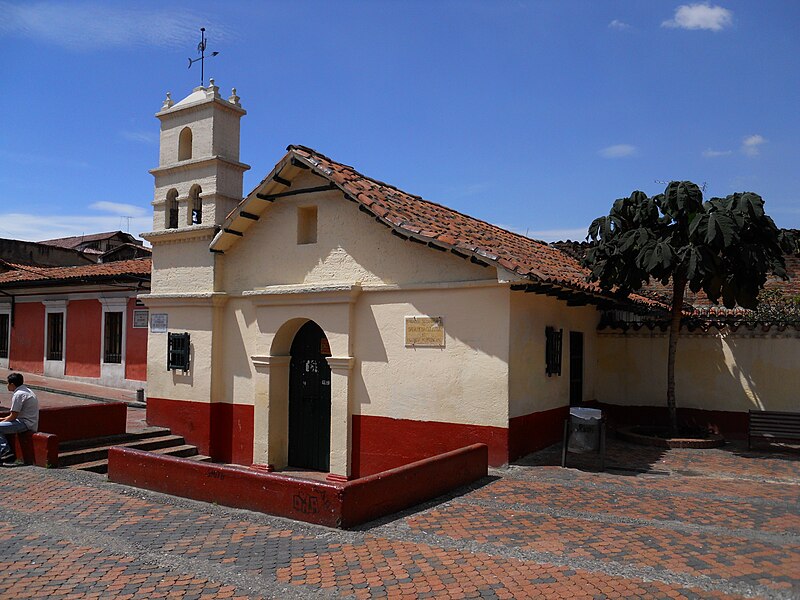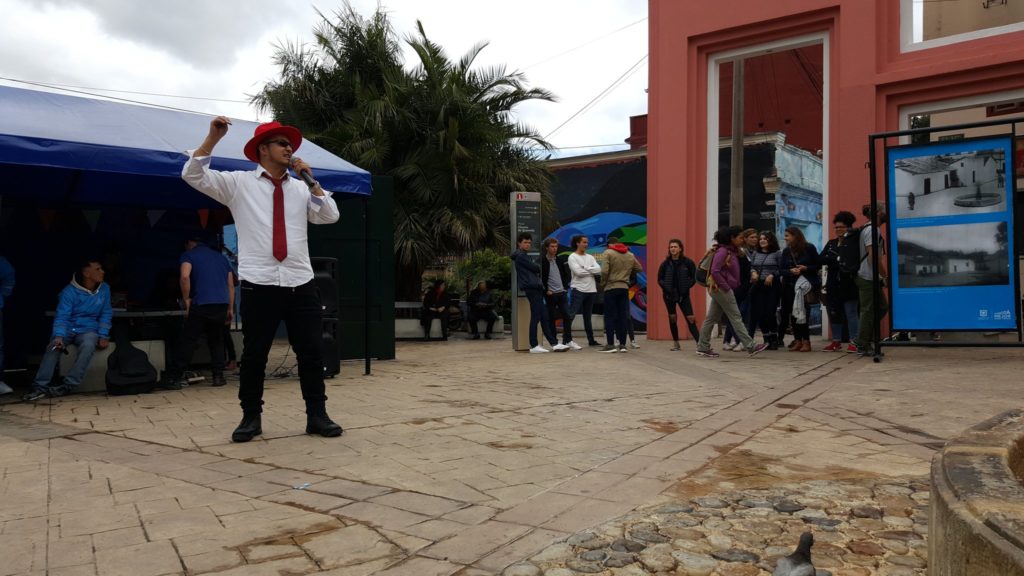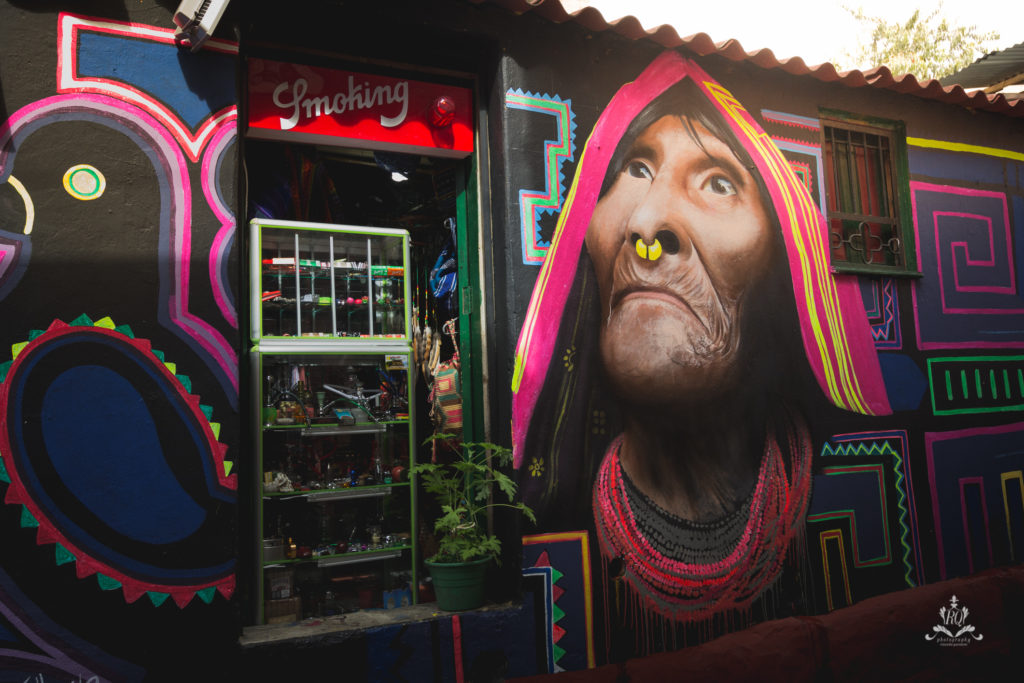
Bogota, the capital of Colombia, is a city that harbors a rich history and diverse cultural heritage. Amidst its cobblestone streets and colonial buildings, one of the emblematic places that stands out is Chorro de Quevedo. This small corner, located in the La Candelaria neighborhood, is much more than a simple square: it’s a meeting point of traditions, art, and tourism that resonates with echoes of the past.
Historical Origins: A Witness to the Past
The Chorro de Quevedo square is the place where Gonzalo Jimenez de Quesada established his garrison, shortly before founding the city of Bogota there in 1538. The first Christian church in Bogota, the Humilladero Chapel, was built there.
However, the square gained significance long before his arrival. The indigenous Muisca people, the original inhabitants of the region, already considered this place a spiritual and cultural meeting point. Ceremonies and rituals took place here, marking the beginning of the historical importance of this site.
It’s the place where, according to chronicles, the Zipa, the supreme ruler of the Muisca, would stand. From that vantage point, the noble could contemplate the vastness of the Bogota savanna.
In 1832, the space was acquired by an Augustinian friar named Quevedo. There, the father installed a public fountain that remained in operation until 1896, giving the place the name that it still bears today. In that year, the collapse of a wall destroyed the original fountain.
The space was somewhat forgotten until authorities reconstructed it in 1969, based on historical descriptions. The current Hermitage of San Miguel del Principe was built, following the architecture of the disappeared Humilladero Chapel.

Tradition and Living Culture
Today, Chorro de Quevedo is a melting pot of cultural traditions that blend in its cobblestones and murals. The bohemian and creative spirit of the place attracts artists, musicians, and writers who gather to share their art and express their ideas. The nearby streets are adorned with graffiti and murals that narrate stories of the city and the country, creating an open-air gallery that invites visitors to immerse themselves in local culture.
Through the narrow streets surrounding the square, dozens of local vendors sell crafts and offer visitors chicha, the indigenous beverage made from fermented maize, and “fritanga,” a combination of pork sausages, stuffed meats, lamb giblets, and various fried organ meats.
Storytellers, Guardians of Bogotá’s Oral Tradition
In the historical heart of Bogota, Chorro de Quevedo emerges as an emblematic corner where oral tradition comes to life. The “Cuenteros del Chorro de Quevedo,” passionate urban storytellers, captivate locals and visitors with their lively and colorful tales. Sitting on the old cobblestones, these street artists preserve the essence of Colombian culture through the spoken word.
Chorro de Quevedo, the birthplace of legends and cultural gatherings, turns into a stage where stories that oscillate between fantasy and reality are told each night. The storytellers skillfully weave captivating narratives, entertaining their audience while keeping alive the ancestral tradition of transmitting knowledge through word of mouth. Their stories span from pre-Columbian myths to contemporary anecdotes, creating an invaluable link between past generations and newcomers.
Thus, the “Cuenteros del Chorro de Quevedo” stand as guardians of Bogota’s cultural heritage, reminding us that amidst modern hustle and bustle, timeless stories still have the power to unite the community and celebrate the richness of the spoken word.

Tourists Drawn by Local Charm
Chorro de Quevedo has transcended its ancestral history and become a popular tourist destination. Visitors can experience the authenticity of Bogota while exploring its cobblestone streets and colonial buildings. They can enjoy a diverse gastronomy in the small restaurants lining the square, offering everything from traditional dishes to international options. Moreover, the vibrant atmosphere and artistic energy attract travelers seeking unique experiences.
One of the most crowded spaces is Calle del Embudo, a narrow cobblestone alley that leads down from the central square northwards. Colorful shops, selling crafts, chicha, and the famous “picada” or “fritanga,” are always a great draw for both locals and tourists.

Preservation and the Future
Despite its undeniable charm, Chorro de Quevedo is not exempt from challenges. The growing influx of tourists raises questions about how to maintain a balance between preserving its cultural identity and satisfying tourist needs. It is crucial for local authorities and the community to work together to implement sustainable measures that protect the place’s authentic character.
Chorro de Quevedo in Bogota is more than just a simple square; it’s a cultural treasure that encapsulates the history and creativity of the city. Its origins intertwine with ancestral traditions and colonial influence, creating a space where living culture meets tourism. As a magnet for artists and travelers alike, this historical corner will continue to be a focal point of Bogota’s ever-evolving identity, always rooted in its past while looking towards the future.
See all the latest news from Colombia and the world at ColombiaOne.com. Contact our newsroom to report an update or send your story, photos and videos. Follow Colombia One on Google News, Facebook, Instagram, and subscribe here to our newsletter.

